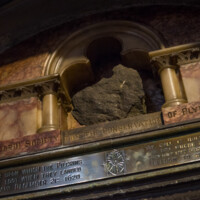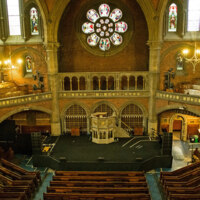Description
The congregation of Union Chapel was formed in 1799 when a group of evangelical Anglicans broke away from the church to join with other nonconformists. Their aim was to create a 'Catholic and liberal plan' that would 'unite Christians of different denominations in religious worship and brotherly affection'. In the 1840s, the Chapel joined the Congregational Union and, in the 1870s, moved to a new purpose-built church designed by James Cubbitt (opened in 1877 by William Gladstone, and now Grade I listed).
A key figure in the expansion of the church, and the campaign to raise funds for the new building, was Rev. Henry Allon. He had become co-pastor in 1844, and was the sole pastor for exactly forty years (1852–92). He was an influential figure in British nonconformist circles: he wrote Congregational history; was heavily involved with Cheshunt, a Congegational theological college in Hertfordshire; he edited the British Quarterly Review, and chaired the Congregational Union of England and Wales on two occasions.
Allon had connections with leading Congregationalists on the East Coast of the US, such as H.M. Dexter (an important scholar of Pilgrim history). In 1883, a fragment of Plymouth Rock - the supposed landing point of the Pilgrims in 1620 - was gifted from the Pilgrim Society of America. It was installed in the lintel of the door leading to the pulpit, which means every time the minister goes to preach he does so after passing under this Mayflower-story relic. A plaque below notes:
A fragment of the rock upon which the Pilgrims of "the Mayflower" set foot when they landed at Plymouth New England December 21st 1620.
Ay, call it holy ground
The soil where first they trode
The have left unstained what there they found -
The freedom to worship GOD
In 2019, the Society of Mayflower Descendants gifted a new plaque in commemoration of the 400th anniversary of the sailing.


